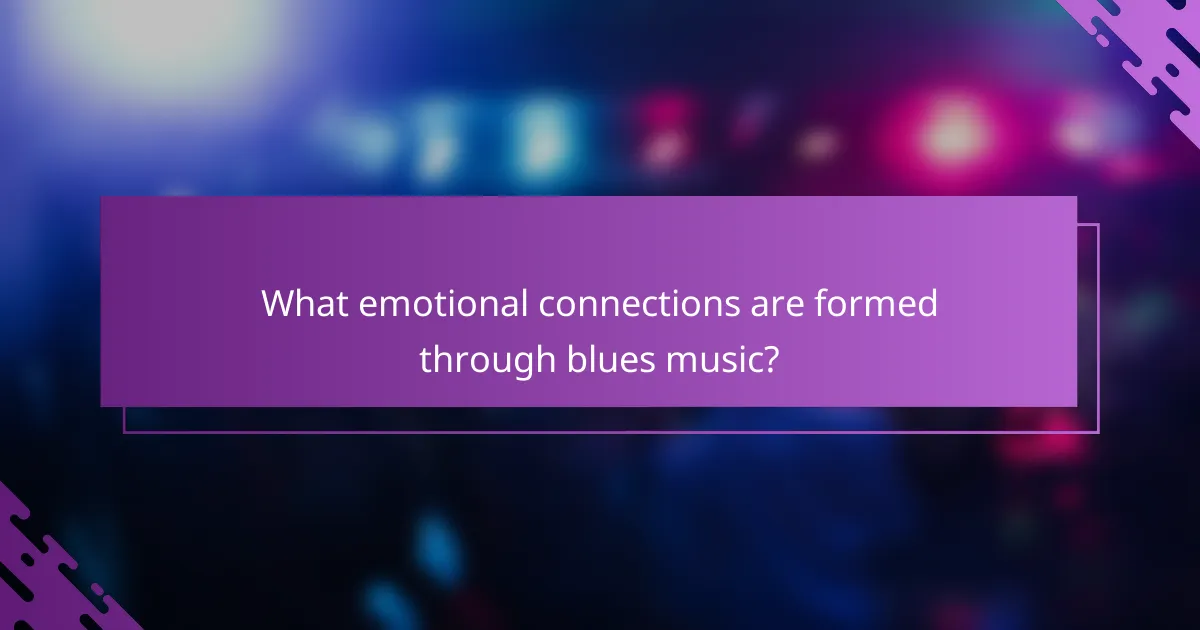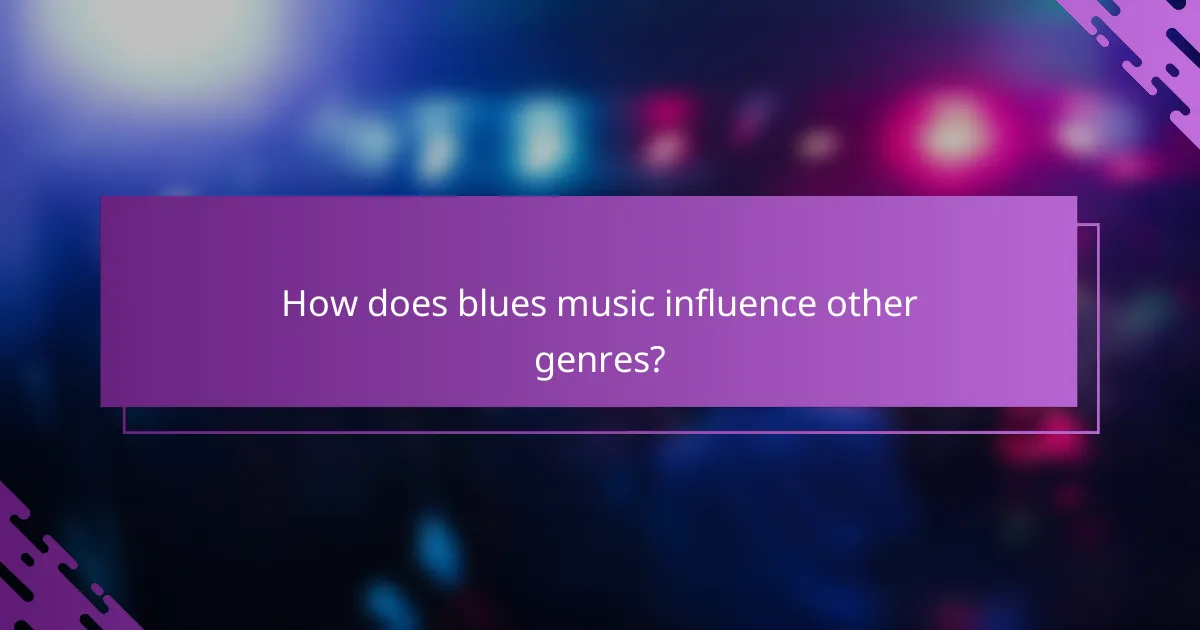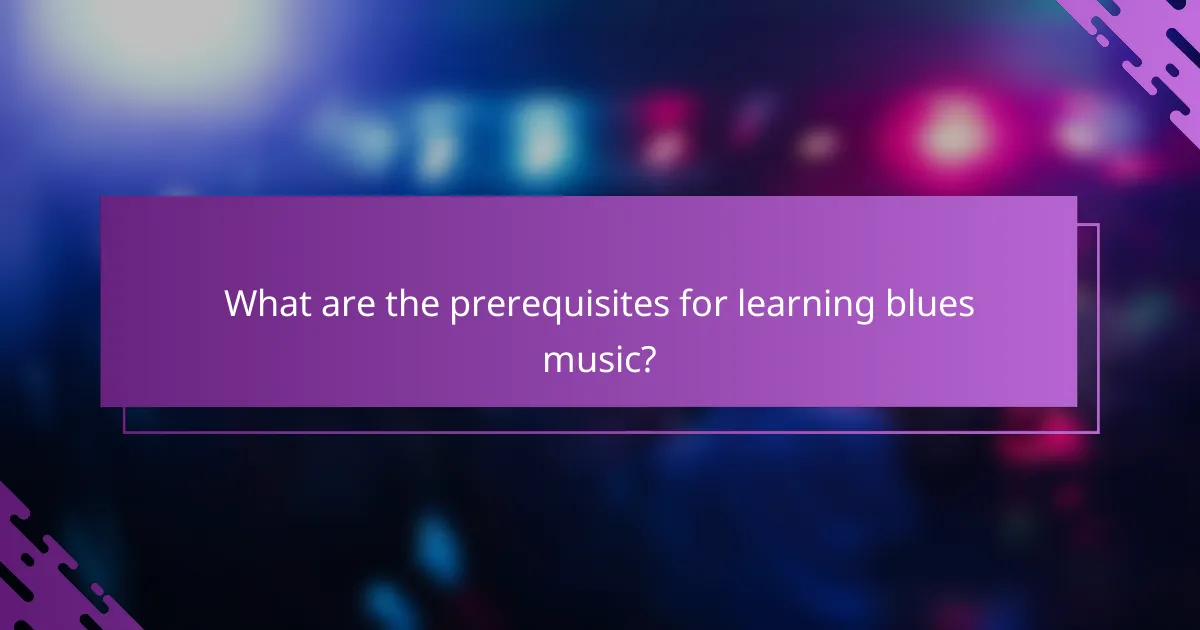Blues music serves as a powerful medium for cathartic release, enabling both listeners and performers to navigate and articulate profound emotions. With its focus on themes of sorrow, love, and resilience, the genre fosters deep emotional connections and encourages reflection on personal experiences and societal challenges.

How does blues music provide cathartic release?
Blues music offers cathartic release by allowing listeners and performers to express and process deep emotions. Through its themes of sorrow, love, and resilience, blues creates a space for reflection and healing.
Emotional expression through lyrics
The lyrics of blues music often delve into personal struggles and heartache, making them relatable to many. This emotional honesty allows listeners to connect with their own feelings, providing a sense of validation and release. For example, songs that recount tales of lost love or hardship resonate deeply, enabling audiences to confront their own experiences.
Additionally, the storytelling aspect of blues lyrics invites listeners to engage with the narrative, fostering a deeper emotional connection. This process can be therapeutic, as it encourages individuals to reflect on their own life stories and find solace in shared experiences.
Therapeutic benefits of improvisation
Improvisation in blues music serves as a powerful tool for emotional expression and release. Musicians often create spontaneous melodies and solos, allowing them to convey feelings that words alone cannot capture. This form of expression can be liberating, providing an outlet for pent-up emotions.
Engaging in improvisation can also enhance creativity and self-awareness. Musicians who practice improvisation often report feeling a sense of freedom and relief, as they explore their emotions through sound. This practice can be beneficial for anyone looking to process their feelings, whether through playing an instrument or simply listening.
Historical context of blues as a coping mechanism
The blues originated in the African American communities of the Deep South in the late 19th century, emerging as a response to social and economic hardships. This historical context highlights how blues music served as a coping mechanism for those facing oppression and adversity. The genre’s roots in storytelling and communal experiences reflect the struggles of its creators.
As blues evolved, it continued to provide a voice for marginalized communities, offering a means to process pain and find hope. The emotional depth of blues music has made it a lasting source of comfort and resilience, illustrating its role as a vital tool for catharsis throughout history.

What emotional connections are formed through blues music?
Blues music creates deep emotional connections by expressing feelings of pain, joy, and resilience. The genre resonates with listeners through its raw honesty and reflective themes, allowing individuals to connect with their own experiences and emotions.
Relatable themes of struggle and resilience
The blues often explores themes of struggle, hardship, and perseverance, making it relatable to many. Songs frequently depict personal battles, whether they involve love, loss, or societal challenges, showcasing the human experience’s complexity.
This connection to struggle fosters a sense of solidarity among listeners, as they find comfort in knowing they are not alone in their hardships. The resilience portrayed in blues music inspires hope, encouraging individuals to overcome their own obstacles.
Influence of personal stories in songwriting
Personal stories play a crucial role in blues songwriting, as artists draw from their own life experiences to craft their music. This authenticity enhances the emotional depth of the songs, allowing listeners to feel the genuine pain and joy expressed in the lyrics.
Many blues musicians share their narratives of overcoming adversity, which not only enriches the music but also creates a powerful bond with the audience. The storytelling aspect of blues invites listeners to reflect on their own lives, making the emotional connection even stronger.

What are the reflective themes in blues music?
Blues music often delves into reflective themes that resonate deeply with listeners, focusing on personal experiences and societal issues. These themes include exploration of love and loss, as well as social commentary on hardship, both of which evoke strong emotional connections.
Exploration of love and loss
The exploration of love and loss is a central theme in blues music, capturing the pain and heartache that come with relationships. Artists often express feelings of betrayal, longing, and nostalgia through poignant lyrics and soulful melodies.
For example, songs may recount stories of unrequited love or the sorrow of losing a partner, allowing listeners to connect with their own experiences. This emotional honesty creates a cathartic release, making blues a powerful medium for processing feelings of heartbreak.
Social commentary on hardship
Blues music serves as a platform for social commentary, addressing the hardships faced by individuals and communities. Many songs reflect on struggles such as poverty, discrimination, and the quest for justice, highlighting the resilience of the human spirit.
Through storytelling, artists shed light on societal issues, encouraging listeners to reflect on their own circumstances. This theme not only fosters empathy but also inspires a sense of solidarity among those who share similar challenges, reinforcing the communal aspect of the blues genre.

How can I experience blues music live in major cities?
To experience blues music live in major cities, seek out local venues, festivals, and clubs that specialize in this genre. Many cities host regular events featuring both established and emerging blues artists, providing an authentic atmosphere for fans.
Top blues festivals in the United States
Some of the most renowned blues festivals in the United States include the Chicago Blues Festival, the New Orleans Jazz & Heritage Festival, and the King Biscuit Blues Festival in Arkansas. These events typically feature a mix of local talent and national acts, offering a vibrant celebration of blues culture.
When attending a blues festival, consider purchasing tickets in advance, as popular events can sell out quickly. Additionally, check for any age restrictions or specific entry requirements, as some festivals may have designated areas for different audiences.
Notable blues clubs in Chicago
Chicago is home to several iconic blues clubs, such as Buddy Guy’s Legends, Kingston Mines, and Rosa’s Lounge. Each venue offers a unique experience, from intimate settings to larger stages, showcasing both established and up-and-coming blues musicians.
When visiting these clubs, arrive early to secure a good spot, especially during peak hours or special performances. Many clubs also offer food and drink specials, enhancing the overall experience while you enjoy the live music.

What are the key artists shaping modern blues music?
Key artists shaping modern blues music include innovative musicians who blend traditional elements with contemporary styles. Their unique approaches and contributions have revitalized the genre, making it relevant to today’s audiences.
Gary Clark Jr.’s innovative style
Gary Clark Jr. is known for his innovative style that fuses blues with rock, soul, and R&B. His guitar work is characterized by a mix of smooth riffs and powerful solos, which captivates listeners and showcases his versatility.
Clark’s ability to blend genres allows him to reach a broader audience while maintaining the emotional depth of blues. His albums often explore themes of love, struggle, and resilience, resonating with fans across different backgrounds.
Joe Bonamassa’s contributions to the genre
Joe Bonamassa has made significant contributions to modern blues through his prolific output and dedication to the craft. He combines classic blues influences with modern production techniques, creating a sound that appeals to both traditionalists and new listeners.
Bonamassa’s extensive touring and live performances have helped popularize blues music globally. His collaborations with legendary artists and his commitment to preserving the genre’s roots ensure that blues continues to evolve while honoring its history.

How does blues music influence other genres?
Blues music has profoundly shaped various genres, particularly rock and roll and jazz, by introducing its emotional depth and distinctive musical techniques. Its influence can be seen in the incorporation of blues scales, chord progressions, and expressive vocal styles across these genres.
Impact on rock and roll evolution
The evolution of rock and roll is heavily rooted in blues music, with many early rock artists drawing inspiration from its rhythms and themes. Pioneers like Chuck Berry and Elvis Presley infused blues elements into their music, creating a sound that resonated with a broader audience.
Key characteristics of blues, such as the twelve-bar structure and the use of call-and-response patterns, became foundational in rock. This blending of genres allowed rock and roll to flourish in the mid-20th century, leading to the emergence of subgenres like rockabilly and hard rock.
Blues’ role in jazz improvisation
Blues music plays a crucial role in jazz improvisation, providing a framework for musicians to explore their creativity. Jazz artists often utilize the blues scale and its associated chord progressions to develop solos that convey deep emotion and spontaneity.
The incorporation of blues elements into jazz has led to the creation of styles such as bebop and fusion, where improvisation is key. Musicians like Miles Davis and John Coltrane have exemplified this blend, showcasing how blues can enhance the emotional impact of jazz performances.

What are the prerequisites for learning blues music?
To learn blues music, you need a basic understanding of music theory, familiarity with essential instruments, and a willingness to express emotions through your playing. These elements create a foundation for developing your unique style and connecting with the genre’s rich emotional depth.
Essential instruments for beginners
The most common instrument for playing blues is the guitar, particularly electric or acoustic models. Beginners often start with a six-string guitar, as it allows for a wide range of techniques and styles. Additionally, the harmonica is a popular choice for those looking to add a soulful sound to their blues repertoire.
Other instruments that can enhance your blues experience include the piano and bass guitar. A keyboard can provide harmonic support and melody, while the bass guitar lays down the rhythmic foundation essential to blues music. Investing in a quality instrument can significantly impact your learning journey.
Basic music theory for blues
Understanding basic music theory is crucial for playing blues music effectively. Familiarity with scales, particularly the pentatonic and blues scales, will help you improvise and create melodies that resonate with the genre’s emotional themes. Learning to recognize chord progressions, such as the classic 12-bar blues, is also essential.
Additionally, grasping concepts like timing, rhythm, and dynamics will enhance your playing. Blues often incorporates swing and shuffle rhythms, which add a unique feel to the music. Practicing these elements will improve your ability to express yourself and connect with the emotional core of blues music.
